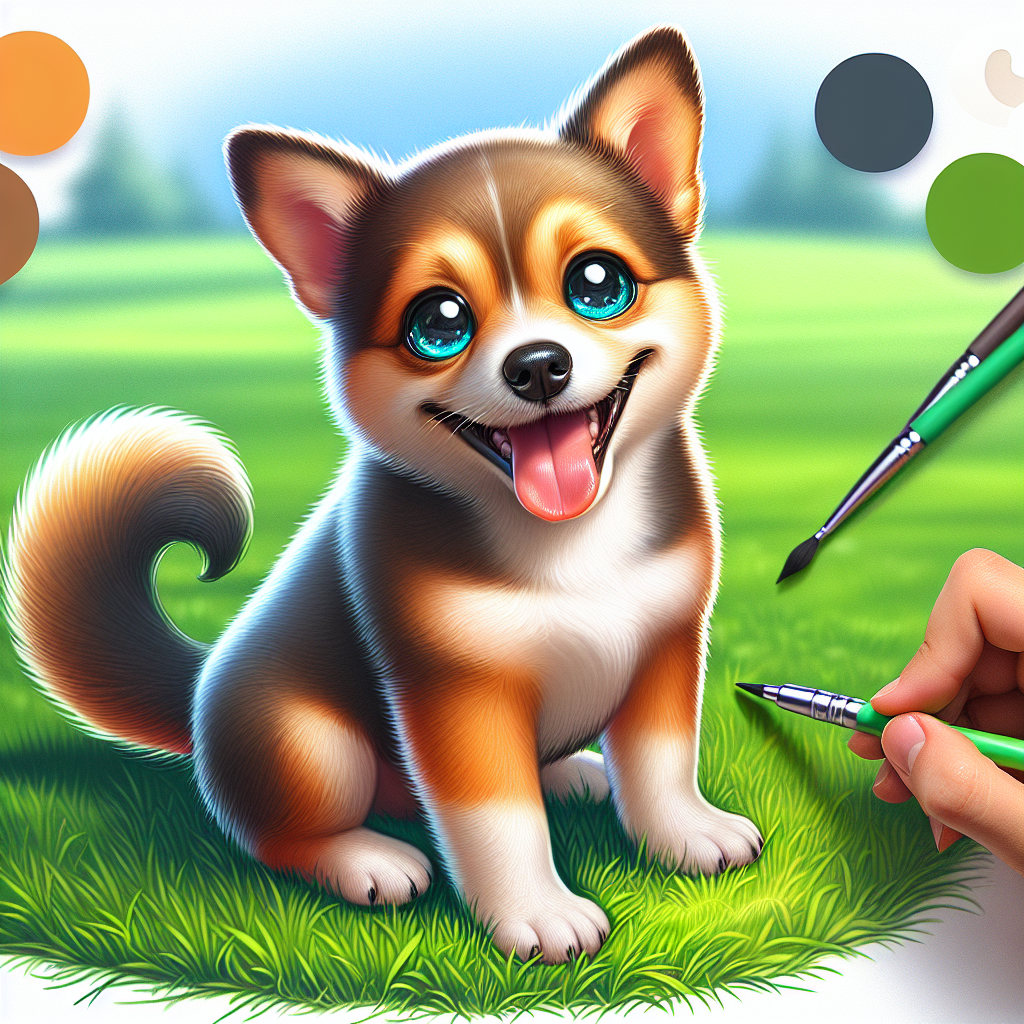Introduction: Fleas, the Unwanted Guests

Alright, folks, let’s dive into this flea circus. Ever found yourself scratching your head, not because of an itch, but because of these tiny critters hopping around like they own the place? Yeah, we’ve all been there. Fleas—those pesky freeloaders—love to invite themselves into our homes. They don’t pay rent, yet they act like they run the joint. And getting rid of them? It’s no walk in the park.
I’ve been in the pet industry for over two decades, and I’ve seen it all. Fleas are like that one neighbor who never mows their lawn—always there, always a nuisance. But fret not, we’re not reaching for the big guns yet. Let’s save some bucks and opt for natural ways to get rid of fleas in your home. You’d be surprised how a few simple things can turn the tables on these unwelcome guests.
Understanding Fleas and Their Habits
Now, before we get to the nitty-gritty of booting these critters out, we need to understand them. Fleas are tiny, but they sure know how to make a big mess. You might think you’re seeing things, but those little jumps are real. They’re like tiny acrobats, bouncing around, making themselves at home.
Understanding the flea life cycle is crucial. It’s not just about the adult fleas you see. Oh no, they’ve got eggs, larvae, and pupae hiding in the shadows. These stages are like their secret weapon—laying low, waiting for the right moment to strike. Knowing this, you can target them at every stage. Knowledge is power, and in this case, it’s your best defense.
Natural Flea Remedies: The Citrus Approach
Alright, let’s talk citrus. Yes, you heard me right—citrus. Lemons and oranges aren’t just for making your kitchen smell nice. They’re like kryptonite to fleas. Citrus flea repellent is a thing, and it’s as simple as boiling a few slices of lemon in water and letting it sit overnight. Once cooled, you’ve got a flea-fighting potion ready for action.
This citrus brew can be used as a spray on carpets and pet bedding. Fleas hate the smell of citrus, and who can blame them? It’s a bit like us humans trying to function in a room full of loud music—distracting, annoying, and eventually, you just want to leave. So, spritz that citrus concoction everywhere you can. It’s a natural flea remedy for the home that won’t leave your wallet lighter.
The Dish Soap Solution
Next up, dish soap. Yes, good ol’ dish soap. Who knew this kitchen staple could double as a flea trap? It’s simple, affordable, and surprisingly effective. Here’s the trick: mix some dish soap with water in a shallow dish. Place it near a light source overnight. The fleas, attracted to the light, jump in and get stuck in the soapy water. It’s like a flea nightclub with a no-exit policy.
This dish soap flea trap works wonders, especially in areas where fleas seem to congregate. It’s a bit like setting up a sting operation—only, you’re targeting fleas, not criminals. And the best part? It’s cost-effective. A bottle of dish soap costs what—two bucks?—and it lasts ages. Plus, it’s not harmful to your pets or the environment. Win-win.
Vinegar: The Multi-Purpose Flea Fighter
Last but certainly not least, vinegar. This stuff is a multitasker if ever there was one. Not only does it make a mean salad dressing, but it’s also a handy vinegar flea spray. Fleas despise vinegar, and that’s good news for us. Mix equal parts water and vinegar in a spray bottle, and you’ve got yourself a potent flea repellent.
Spray this mixture on floors, furniture, and pet bedding. It’s safe for your pets, and it won’t leave your home smelling like a pickle factory—promise. Vinegar is one of those natural flea remedies that’s been around forever, and it works. It’s like having a secret weapon in your cleaning arsenal.
Well, folks, there you have it. A few simple, natural ways to get rid of fleas in your home without breaking the bank. We’ve tackled the citrus approach, dished out some dish soap tricks, and splashed around with vinegar. It’s not rocket science, but it does take a bit of elbow grease.
Remember, you’re not alone in this battle. We’ve all been there—scratching our heads and wondering why we ever got a dog in the first place. But hang in there. You’ve got this. Thanks for sticking with me through this flea escapade. Here’s to a flea-free home and some well-deserved peace of mind. Cheers!
Diatomaceous Earth: The Silent Assassin
So you’re sitting there, scratching your head—not because of fleas (I hope)—but because you’ve heard of this thing called diatomaceous earth for fleas. You’re thinking, “What in the world is that?” Picture this: a fine, white powder that looks harmless enough, but to fleas, it’s like walking on broken glass. This stuff gets under their exoskeletons and dehydrates them to death. Sounds brutal, right? That’s why I call it the silent assassin.
Imagine you’ve got a flea infestation—those little buggers are jumping around like they own the place. You grab a bag of diatomaceous earth, sprinkle it around your carpets, pet bedding, and anywhere else those fleas might hide. Leave it there for a couple of days, vacuum it up, and voilà—your home starts feeling like it’s yours again.
Now, don’t go inhaling this stuff like it’s pixie dust. Be careful when applying it, wear a mask if you have to. And remember, only use the food-grade version. The other stuff’s for swimming pools and, well, you’re not trying to open a public pool in your living room, right?
Essential Oils: Nature’s Potpourri—But for Fleas
Essential oils to repel fleas? Yep, it’s a thing. These aren’t just for making your home smell like a yoga retreat. Peppermint, cedarwood, lavender—these oils are flea kryptonite. But here’s the kicker: fleas hate the smell, while you might find it downright delightful.
Creating a homemade flea spray with essential oils is as simple as mixing a few drops with water and a bit of apple cider vinegar. Shake it up in a spray bottle and spritz away. You’ll be turning your home into a flea-free zone while feeling like you’re walking through a field of flowers.
But hey, don’t go dousing your pets in it. Some oils aren’t pet-friendly, so be sure to do your homework. Test a patch first, and if your furry friend starts doing the cha-cha, maybe try a different oil.
Vinegar Solutions: A Tangy Trick
Vinegar—it’s not just for your fish and chips. This tangy trick packs a punch when it comes to natural ways to get rid of fleas in home. You’re probably wondering, “How does this kitchen staple help?” Well, fleas can’t stand the smell of vinegar. It’s like their worst nightmare.
Mix equal parts water and vinegar—white or apple cider works. This homemade flea spray with vinegar is simple to whip up, and you can use it on carpets, pet bedding, and even on your pet’s fur. Just be sure to avoid their eyes, ears, and nose. They won’t appreciate the vinegar shower otherwise.
This approach isn’t just about getting rid of fleas; it’s about keeping them away. Regular application can help maintain a flea-free home. Plus, your house will smell like a salad dressing—an acquired taste, perhaps, but better than the alternative.
Boric Acid: The Sneaky Powder
Boric acid isn’t just any old powder. It’s a sneaky little weapon in the arsenal against fleas. You’re sitting there, thinking, “Can this really work?” Oh, it does. Using boric acid for flea control is like laying a trap they can’t resist.
Sprinkle it lightly on carpets and upholstery, and let it sit for a bit. Vacuum it up, and repeat as necessary. It’s like a flea spa day—except, you know, the opposite. Flea powder with boric acid works by drying out fleas, and they don’t see it coming.
But remember, a little goes a long way. You don’t want to turn your home into a dust bowl. And keep it away from kids and pets—this isn’t something they should be playing with.
Herbal Flea Sachets: Grandma’s Secret Weapon
Ah, Grandma’s secret weapon. Herbal flea sachets are like those potpourri bags she used to hang in the closet. Only this time, they’re for fleas. Think of them as herbal flea repellents for home—a mix of rosemary, lavender, and other herbs that fleas can’t stand.
You can make these sachets yourself, or find them online if DIY isn’t your thing. Tuck them into pet beds, under cushions, or in any flea-prone area. It’s like setting a no-fly zone for fleas.
And the best part? Your home will smell like a quaint little herb shop. It’s a win-win, really. You get a flea-free home, and a whiff of nostalgia every time you walk past one of these sachets.
So there you have it—natural ways to get rid of fleas in home. It’s not always easy, but with a little patience and persistence, you’ll be on your way to a flea-free haven. Remember, you’re not alone in this battle. We’ve all been there, and we know the itchiness isn’t just on your skin. Thanks for sticking around. Here’s to simpler, less itchy days ahead!
Getting Creative with Essential Oils
Essential oils. Not just for making your home smell like a spa. Nope, they can help you in your battle against fleas. Who’d have thought lavender and cedarwood could be so menacing to these tiny jumpers? Fleas hate these smells. It’s like inviting them to a party and playing the wrong music—they’ll want out. But, a word of caution—some oils aren’t pet-friendly. So, before you go dousing your home, check what’s safe for your furry friends. Essential oils for fleas home remedy? Oh, it works, but go easy.
Picture this. You’re lounging on your couch, basking in the aroma of lavender. Your cat’s snoozing next to you, not a flea in sight. That’s the dream. But don’t just take my word for it—try a little lavender or cedarwood in a diffuser. It’s a natural way to get rid of fleas in home environments. And if you’re feeling adventurous, mix a few drops with water in a spray bottle and go to town. Your home will smell divine, and the fleas? They’ll get the hint.
Busting Fleas with Food-Grade Diatomaceous Earth
Ah, diatomaceous earth. Sounds like something out of a science textbook, but it’s really just ground-up fossils. Who knew fossils could be a flea’s worst nightmare? Sprinkle this fine powder around, and it dries those pesky critters out. But listen closely—make sure it’s food-grade. You don’t want to make things worse. Diatomaceous earth flea treatment is a game-changer in flea control without chemicals.
Sprinkle it on carpets, pet bedding, and any flea hangout spots. Leave it for a couple of days, then vacuum it up. It’s a slow burn, but it works. The fleas get trapped, dehydrated, and you get a little closer to victory. You can almost hear them packing their bags. Effective flea removal solutions? This one’s solid.
Vacuuming Like Your Life Depends on It
Now, vacuuming. Not the most glamorous activity, but man, it’s effective. You gotta vacuum like you’re on a mission from God. How often to vacuum for fleas? Often. Every other day, if you can. It’s a workout and a flea-busting session rolled into one.
Imagine you’re in a race. You, the vacuum, and a house full of fleas. Who’s gonna win? You are, because you’re relentless. Fleas hide in the carpet, the couch, and the cracks—everywhere. But they can’t hide from your vacuum. Make sure to empty the bag outside, though. You don’t want those little suckers coming back.
Natural Flea Traps: Simple Yet Effective
If you’re into DIY, flea traps are your jam. Homemade flea traps are easy. A little dish soap and water in a shallow dish under a light—boom, you’ve got a flea magnet. Fleas get drawn to the light, jump in, and the soap keeps them there. It’s simple, yet effective.
Picture this. You set up your trap, go to bed, and wake up to a dish full of fleas. It’s oddly satisfying. And hey, it’s a natural way to prevent fleas from taking over. You’re not alone in this battle. Fleas might be pesky, but with a little creativity, you’ll win.
Final Thoughts: Embrace the Journey
Alright, let’s wrap this up. Fleas are a pain, no doubt about it. But with these natural ways to get rid of fleas in home, you’re armed and ready. Essential oils, diatomaceous earth, vacuuming, and traps—they’re all part of the arsenal. It’s a journey, sure, but you’re not alone.
Thanks for sticking with this guide. You’ve got the tools, the know-how, and a bit of humor to get through it. Fleas might be tiny, but your determination is bigger. So, go on, give those fleas the boot. You’re in control, and you’ve got this!
Quick Takeaways:
So, you’ve got fleas. Those tiny jumpers that make you want to rip your hair out. Don’t worry. There are natural ways to get rid of fleas in your home. Swear on my grandma’s old couch, these tricks work. First, there’s the citrus flea repellent. Fleas hate the smell of citrus more than a cat hates a bath. You can make a spray with lemon juice and water. Spray it around the house, and watch those fleas scatter.
Then there’s the dish soap flea trap. Simple as pie. Fill a shallow dish with water and a squirt of dish soap. Put it under a lamp. Fleas will jump in, but they won’t jump out. It’s like a flea hotel with no checkout.
Vinegar flea spray is another ace up your sleeve. Mix equal parts vinegar and water. Spray it on your carpets, furniture, and anywhere else fleas like to hang out. They can’t stand the stuff.
And don’t forget about natural flea remedies like diatomaceous earth. Sprinkle it on your carpets and let it sit. It dries out the fleas, and they’re gone before they know it.
Understanding the flea life cycle is key, too. Those little suckers breed like rabbits. You gotta break the cycle to win the war. So keep vacuuming and washing everything in sight. Persistence is the name of the game.
FAQs:
1.
How can I use natural ways to get rid of fleas in my home?
Well, there’s no magic bullet, but you can get creative. Use citrus flea repellent or vinegar flea spray for starters. These natural solutions can be quite effective. Just remember to hit all the spots where fleas like to hide. And don’t forget to vacuum like a mad person. It’s all about persistence.
2.
Are there any homemade flea traps I can try?
Absolutely. The dish soap flea trap is a classic. Fill a shallow dish with water and dish soap, and place it under a lamp. The light attracts fleas, and the soap traps them. It’s a cheap and easy way to catch those pesky critters.
3.
Can essential oils really help with flea problems?
You bet. Essential oils like lavender and cedarwood can repel fleas. But be careful—some oils aren’t safe for pets. A few drops in water can make a spray that sends fleas packing. Just don’t go overboard.
4.
How does understanding the flea life cycle help in getting rid of them?
Knowing the enemy is half the battle. Fleas have a life cycle that includes eggs, larvae, pupae, and adults. If you only target the adults, you’re missing a big chunk of the problem. Keep vacuuming and washing everything to break the cycle. It’s a long game, but it’s worth it.
5.
What are the benefits of using natural flea remedies for home?
Going natural means you’re not filling your home with chemicals. It’s safer for you, your family, and your pets. Plus, natural remedies like vinegar flea spray or diatomaceous earth are cheap and easy to use. And who doesn’t love a good DIY project?
Conclusion:
Alright, folks. We’ve been on a journey through the world of natural ways to get rid of fleas in your home. It’s not always easy, but it’s doable. The key is persistence, creativity, and a little elbow grease. You’ve got citrus flea repellent, dish soap flea traps, vinegar flea spray, and diatomaceous earth in your toolkit. Use them wisely, and you’ll be well on your way to a flea-free home.
Remember, understanding the flea life cycle is crucial. Those little buggers breed fast, so stay vigilant. Keep vacuuming, washing, and spraying. It’s a war of attrition, but you can win. Thanks for sticking with me on this wild ride. Here’s to a home that’s as flea-free as it is welcoming. Cheers to you, and may the fleas find another place to crash.
References:
1. [WebMD – Natural Remedies for Fleas](https://www.webmd.com/pets/ss/slideshow-fleas-natural-remedies)
2. [The Spruce – Homemade Flea Repellent](https://www.thespruce.com/homemade-flea-repellent-1388143)
3. [AKC Pet Insurance – Natural Flea and Tick Prevention](https://www.akcpetinsurance.com/blog/natural-flea-and-tick-prevention)
4. [Country Living – How to Get Rid of Fleas](https://www.countryliving.com/uk/homes-interiors/interiors/a33630251/how-get-rid-fleas/)
5. [BetterPet – How to Get Rid of Fleas Naturally](https://betterpet.com/how-to-get-rid-of-fleas-naturally/)
Our solution eradicates fleas on contact without harmful chemicals, ensuring a safe environment for your pets and family. Easy to use and highly effective, SayByeBugs helps you maintain a flea-free home. Learn more and order today at SayByeBugs.com
Our solution eradicates fleas on contact without harmful chemicals, ensuring a safe environment for your pets and family. Easy to use and highly effective, SayByeBugs helps you maintain a flea-free home. Learn more and order today at SayByeBugs.com








